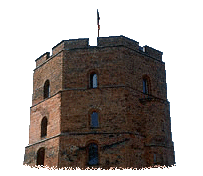Hi John,I remember those Van Der Graaf generators in physics lab too.  What a funny picture you paint in the mind. Weird Science!
What a funny picture you paint in the mind. Weird Science! 
This is really not all that difficult a concept, and I've always kind of been open with my thoughts and designs. I don't hold this stuff close to my chest at all. I'm more into the "building a better mousetrap" than I am into trying to cultivate trade secrets.
Here are a couple of links that describe what we're doing pretty well:
Monte Vogt is doing the flow measurements and valve design, and I'm doing a push-pull driven horn implementation based on what we find. Our goal is to reduce distortion and compression, which will increase power handling too. The main two things we're focused on are improving symmetry and improving cooling ability.Some have focused on reduced excursion via horn loading to improve distortion but there are limits to what can be done. The radiator's symmetry is still a limiting factor; You can't horn-load a distorted driver and get undistorted output. One way to improve symmetry and reduce distortion is to use a shorting ring in the driver's motor and another way is to use two similar drivers in a push-pull configuration.
High-power implementations typically include high-pass filters to prevent signals being presented below horn cutoff. This is mainly a protection mechanism, to prevent damage due to over-excursion. That also keeps excursion down, which in turn helps reduce distortion.
But many systems are run well below cutoff, using EQ to bring up the low frequencies that aren't amplified by the horn. In this case, low frequency signals drive the woofer excursion way up, which in turn generates a lot of harmonic distortion.
In either case, a mechanism that increases symmetry is desireable. Whether horn-loaded or not, improved symmetry reduces distortion. When effectively horn-loaded, reduced excursion improves distortion even more.
Another issue we're dealing with is improved cooling. This comes as a problem/solution dovetailed on the push-pull mechanism. To mount a pair of drivers in push-pull configuration has one magnet exposed to the throat. If a cooling vent is there, it may make noises that pass through the throat. It is also possible that they are of high enough frequency that they are attenuated by the throat. But we are looking at ducting this vent, which would remove the noise.
This is where the two problems and solutions combine. When large horns like this are used in prosound, they are often used at high power levels. The rear chamber may become so hot in existing designs that the cooling vent is just passing hot air back and forth. It may be getting hot enough to actually build static pressure in the back chamber. So we're going to test and see what the effects are of venting to the outside and to a sealed intercooler.
Monte is measuring flow through the vent at various excursion levels and is making a fitting for the vent. With this information, he will fabricate a valved fitting that makes the vent more effective as a pump. We've discussed a couple different types, each with different characteristics. One has a positive seal, but takes a specific pressure to open in each direction. This one will make the pumping action very efficient. But it may also modify driver characteristics at low level. The other uses a couple of orifices that are more like whistles. This valve isn't as effective, but it won't change driver characteristics at low levels either. So we're measuring each of those to see which works best.
Beyond the matters of pump flow and cooling, we're also measuring the pneumatic and acoustic effects of venting to the outside. The is no seal between the vent hole and the rear of the speaker. Air passes through the gap. It is a very small passage with restriction, but it won't hold static pressure. So we're measuring the amount of the loss, and the frequency where it becomes restrictive enough that it acts like it was sealed. This is kind of like how a ported speaker acts above fb verses how it acts below. The leak is so small, we're hoping that it transitions at a very low frequency.
We're considering using an intercooler to maintain a sealed system. Even if the open vent works well, the intercooler idea might be worth looking into. Not only does it seal the system, but it also uses radiating vanes to cool the speaker. Pumping action is provided by speaker movement. It's really not a very complicated system, just press the fitting into the speaker vent, attach hoses and run them to the intercooler. The intercooler would be mounted on a recessed area on the speaker cabinet, perhaps covered by a metal grille. The hoses would pass through cabinet using pipe fittings.
This all seems like overkill for the home, and it probably is. The part I was most focused on for home users is the distortion reduction. An intercooler isn't probably going to be necessary for home systems. But for prosound guys, there has been a lot of talk about thermal failures so this seems like a good thing to look at. And it isn't really a very difficult thing to add, certainly no more difficult than any other part of the system. Shouldn't be hard to do at all.











